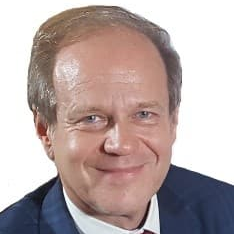Auricular Medicine: Gateway to the Brain in Healing
A special issue of Medicines (ISSN 2305-6320).
Deadline for manuscript submissions: closed (31 December 2018) | Viewed by 66169
Special Issue Editors
2. Auricular Medicine- The Mater Centre for Wellbeing, The Mater Hospital, Wollstonecraft, NSW 2065, Australia
Interests: acupuncture; auriculotherapy; laser; human resilience; mental health; auricular medicine, acupuncture, photobiomodulation; therapeutic laser
Interests: photobiomodulation; laser therapy; laser acupuncture; laser medicine; evidence-based complementary medicine
Special Issues, Collections and Topics in MDPI journals
Special Issue Information
Dear Colleagues,
Auricular medicine is a traditional method. It includes auricular diagnosis, as well as auriculotherapy and auricular preventive medicine. Exemplarily ear acupuncture has been successfully used in various fields of medicine, especially for pain relief. The scope of its application in clinical care has grown immensely, hence, our call for this Special Issue.
The introduction of lasers, especially low-level lasers, to auriculotherapy brought a quantifiable modality to the repertoire of modaltities already available to clinicians, including needles, electro-stimulation, acupressure, liquid stimulation, and vibrations.
This Special Issue focuses on historical background, development and anatomical and neurological/neurophysiological aspects of auricular medicine and also on the different methods of ear diagnosis, treatment and prevention. The Special Issue is open to all manuscripts on all types of ear stimulation methods. Theoretical, animal experimental studies, investigations in healthy volunteers, short reports, letters to the editors, study designs and clinical studies, and case reports and photo essays are welcome.
We look forward to your valuable manuscript. Together with the managing editorial team from Medicines we will do our best to support you by publishing your important data.
Dr. Im Quah-Smith
Prof. Dr. Gerhard Litscher
Guest Editors
Manuscript Submission Information
Manuscripts should be submitted online at www.mdpi.com by registering and logging in to this website. Once you are registered, click here to go to the submission form. Manuscripts can be submitted until the deadline. All submissions that pass pre-check are peer-reviewed. Accepted papers will be published continuously in the journal (as soon as accepted) and will be listed together on the special issue website. Research articles, review articles as well as short communications are invited. For planned papers, a title and short abstract (about 100 words) can be sent to the Editorial Office for announcement on this website.
Submitted manuscripts should not have been published previously, nor be under consideration for publication elsewhere (except conference proceedings papers). All manuscripts are thoroughly refereed through a single-blind peer-review process. A guide for authors and other relevant information for submission of manuscripts is available on the Instructions for Authors page. Medicines is an international peer-reviewed open access monthly journal published by MDPI.
Please visit the Instructions for Authors page before submitting a manuscript. The Article Processing Charge (APC) for publication in this open access journal is 1400 CHF (Swiss Francs). Submitted papers should be well formatted and use good English. Authors may use MDPI's English editing service prior to publication or during author revisions.
Keywords
- auricular medicine
- ear acupuncture
- auricular diagnosis
- auriculotherapy
- auricular preventive medicine





